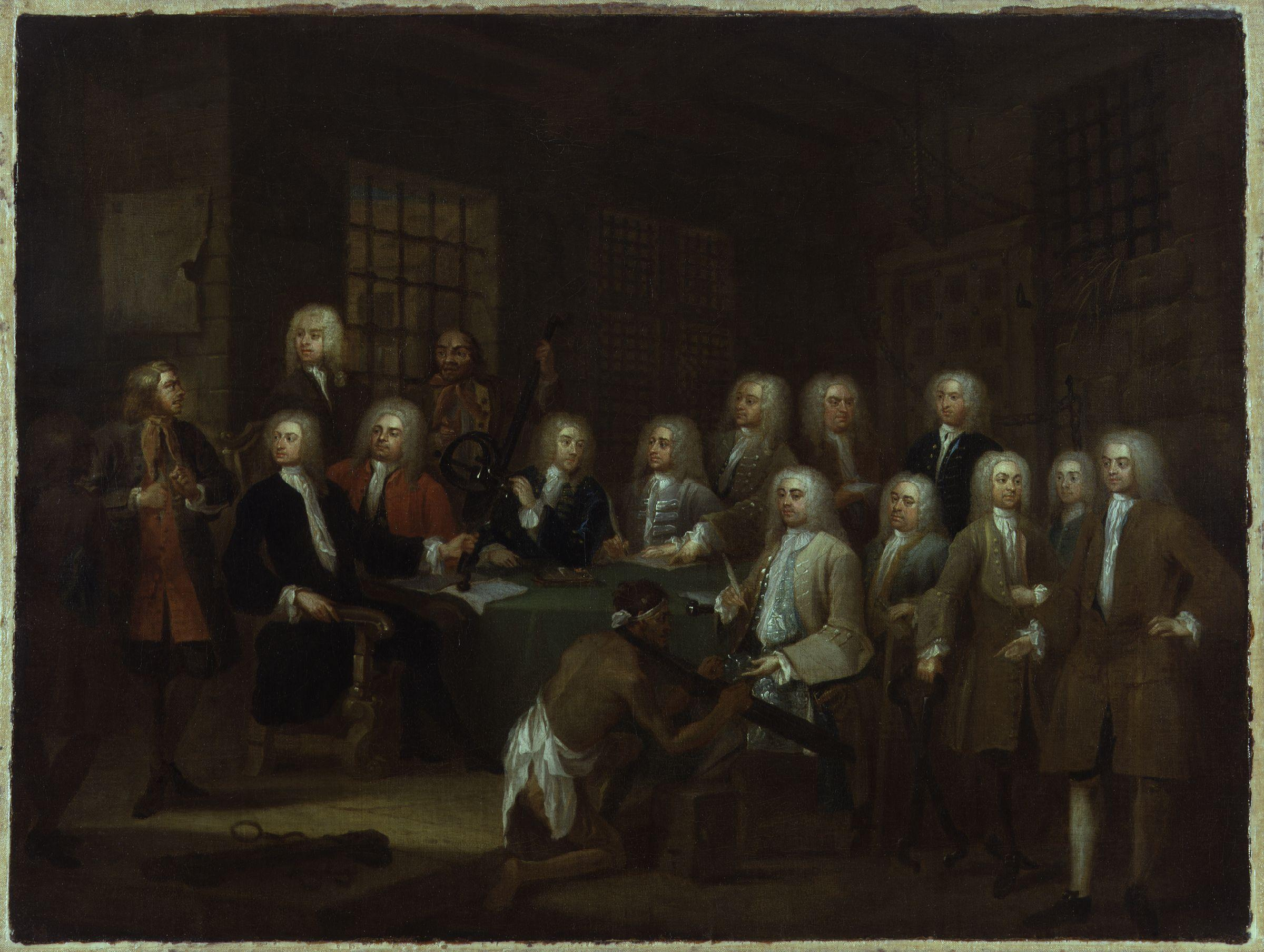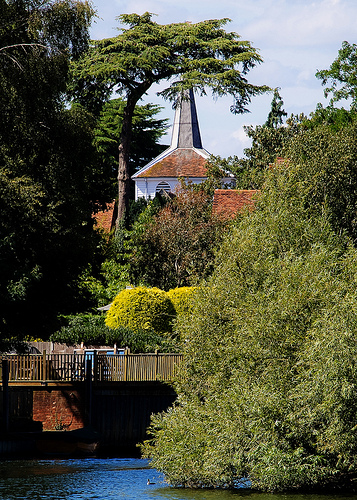|
Richard Onslow (British Army Officer)
Lieutenant-General Richard Onslow ( – 16 March 1760) was a British Army officer and politician. After the death of their parents, his older brother Arthur bought him a captain's commission in the British Army. He first saw action in the Anglo-Spanish War in 1727, after which he was returned to Parliament for the family borough of Guildford. His political contributions were negligible in comparison to his brother, and he continued to serve as a career officer, holding commands in the War of the Austrian Succession at Dettingen and Fontenoy. In 1759, he was appointed Governor of Plymouth and commander of the Western District, and died as a lieutenant-general the following year while presiding over two prominent courts-martial. Early life He was the second son of Foot Onslow, Member of Parliament for Guildford. His older brother was Arthur Onslow, Speaker of the House of Commons from 1728 to 1761, and after the death of his father in 1710 and his mother in 1715, he and his fou ... [...More Info...] [...Related Items...] OR: [Wikipedia] [Google] [Baidu] |
Hans Hysing (1678-1753) - Lieutenant-General Richard Onslow (d
Hans Huyssing or Hans Hysing (1678–1752 or 1753) was a Swedish-born portrait painter who worked in England. Biography Hysing was born in Stockholm, Sweden, and apprenticed to a goldsmith before studying portrait painting under David von Krafft. Hysing went to England in 1700 as assistant to fellow Swedish portrait painter Michael Dahl, with whom he lived for many years. Hysing succeeded to Dahl's practice after the latter's death, and also adopted Dahl's manner. Hysing's patrons were the family of George II, painting the queen, the three royal princesses, and George III as a boy. Many of Hysing's portraits, including Sir Robert Walpole, the speaker Arthur Onslow, Dr. John Theophilus Desaguliers, and architect James Gibbs were engraved in mezzotint Mezzotint is a monochrome printmaking process of the '' intaglio'' family. It was the first printing process that yielded half-tones without using line- or dot-based techniques like hatching, cross-hatching or stipple. Mezz ... [...More Info...] [...Related Items...] OR: [Wikipedia] [Google] [Baidu] |
James Oglethorpe
James Edward Oglethorpe (22 December 1696 – 30 June 1785) was a British soldier, Member of Parliament, and philanthropist, as well as the founder of the colony of Georgia in what was then British America. As a social reformer, he hoped to resettle Britain's "worthy poor" in the New World, initially focusing on those in debtors' prisons. Born to a prominent British family, Oglethorpe left college in England and a British Army commission to travel to France, where he attended a military academy before fighting under Prince Eugene of Savoy in the Austro-Turkish War (1716–1718), Austro-Turkish War. He returned to England in 1718, and was elected to the House of Commons of the United Kingdom, House of Commons in 1722. His early years were relatively undistinguished until 1729, when Oglethorpe was made chair of the Gaols Committee that investigated British debtors' prisons. After the report was published, to widespread attention, Oglethorpe and others began publicizing the idea o ... [...More Info...] [...Related Items...] OR: [Wikipedia] [Google] [Baidu] |
1727 British General Election
The 1727 British general election returned members to serve in the House of Commons of the 7th Parliament of Great Britain to be summoned, after the merger of the Parliament of England and the Parliament of Scotland in 1707. The election was triggered by the death of King George I; at the time, it was the convention to hold new elections following the succession of a new monarch. The Tories, led in the House of Commons by William Wyndham, and under the direction of Bolingbroke, who had returned to the country in 1723 after being pardoned for his role in the Jacobite rising of 1715, lost further ground to the Whigs, rendering them ineffectual and largely irrelevant to practical politics. A group known as the Patriot Whigs, led by William Pulteney, who were disenchanted with Walpole's government and believed he was betraying Whig principles, had been formed prior to the election. Bolingbroke and Pulteney had not expected the next election to occur until 1729, and were consequently ... [...More Info...] [...Related Items...] OR: [Wikipedia] [Google] [Baidu] |
Surrey (UK Parliament Constituency)
Surrey was a constituency of the House of Commons of the Parliament of England then of the Parliament of Great Britain from 1707 to 1800 and of the Parliament of the United Kingdom from 1801 to 1832. It was represented by two Members of Parliament until 1832. The constituency was split into two two-member divisions, for Parliamentary purposes, in 1832. The county was then represented by the East Surrey and West Surrey constituencies. Boundaries Surrey is one of the historic counties of England, located south of the River Thames, in south east England. The constituency comprised the whole county but had six towns which were boroughs for some of when it was a constituency: Bletchingley, Gatton, Guildford, Haslemere, Reigate and Southwark - each of which elected two MPs in their own right, these were not excluded from the county constituency, and owning property within the boroughs could confer a vote at the county election.) Members of Parliament 1290-1640 MPs 1640–1832 ... [...More Info...] [...Related Items...] OR: [Wikipedia] [Google] [Baidu] |
Thomas Brodrick (1654–1730)
Thomas Brodrick (4 August 1654 – 3 October 1730) was an Irish and British politician who sat in the Irish House of Commons between 1692 and 1727 and also in the British House of Commons from 1713 to 1727. He owned lands in both Surrey in England, and County Cork, Ireland. Life Brodrick was the eldest son of Sir St John Brodrick of Ballyannan, Midleton, County Cork and his wife Alice Clayton, daughter of Laurence Clayton of Mallow, County Cork. He was admitted at Trinity Hall, Cambridge and also at Middle Temple in 1670. He received an LLB in 1677. He inherited lands at Wandsworth in 1680, and received a settlement of some of the family's Irish lands upon marrying. Brodrick sat in the Irish House of Commons for Midleton from 1692 to 1693, for County Cork from 1695 to 1699 and again from 1703 to 1713, and for Midleton again from 1715 to 1727. He was appointed to the Irish Privy Council in 1695, removed by the Tory administration in 1711 but reappointed in 1714. Brodrick live ... [...More Info...] [...Related Items...] OR: [Wikipedia] [Google] [Baidu] |
Arthur Onslow (priest)
Arthur Onslow (31 August 1746 – 15 October 1817) was Dean of Worcester from 1795 until his death. The son of Lieutenant General Richard Onslow, he was educated at Eton and Exeter College, Oxford. He was ordained in 1774 and held incumbencies at St James Garlickhythe in the City of London, Shottesbrooke, Kidderminster, Wolverley and Lindridge. He married Frances Phipps in 1772. They had two daughters and three sons, one of whom, Richard, was Archdeacon of Worcester from 1815 to 1849. References 1746 births 1817 deaths Deans of Worcester Arthur Arthur is a common male given name of Brittonic languages, Brythonic origin. Its popularity derives from it being the name of the legendary hero King Arthur. The etymology is disputed. It may derive from the Celtic ''Artos'' meaning “Bear”. An ... People educated at Eton College {{ChurchofEngland-dean-stub ... [...More Info...] [...Related Items...] OR: [Wikipedia] [Google] [Baidu] |
Sir Richard Onslow, 1st Baronet
Sir Richard Onslow, 1st Baronet, GCB (23 June 1741 – 27 December 1817) was an English naval officer who played a distinguished role at the Battle of Camperdown. Naval career He was the younger son of Lt-Gen. Richard Onslow and his wife Pooley, daughter of Charles Walton. Onslow's uncle was Arthur Onslow, Speaker of the House of Commons, and he enjoyed considerable interest as he rapidly rose through the Navy. He was made fourth lieutenant of the ''Sunderland'' on 17 December 1758 by V-Adm. George Pocock, fifth lieutenant of the ''Grafton'' on 3 March 1759, and fourth lieutenant of Pocock's flagship, the ''Yarmouth'' on 17 March 1760, upon which he returned to England. Onslow became commander of the ''Martin'' on 11 February 1761, cruising in the Skagerrak until his promotion to captain of the ''Humber'' on 14 April 1762. He joined the ''Humber'' in June, but she was wrecked off Flamborough Head while returning from the Baltic in September. Onslow was court-martialed f ... [...More Info...] [...Related Items...] OR: [Wikipedia] [Google] [Baidu] |
George Onslow (British Army Officer)
Lieutenant colonel George Onslow (28 April 1731 – 12 November 1792) was a British politician and army officer, the eldest son of Richard Onslow and his second wife Pooley, and the nephew of Arthur Onslow, Speaker of the House of Commons. Onslow was born in Guildford, Surrey in 1731. He entered the British Army as an ensign in the 1st Regiment of Foot Guards on 17 February 1748 and became a captain in John Guise's Regiment of Foot on 12 January 1751. Onslow continued to rise in the Army, and was promoted major in the 57th Regiment of Foot on 3 August 1757. He returned to his original regiment, the Foot Guards, on 27 March 1759 with the rank of captain-lieutenant and was promoted lieutenant-colonel on 7 November 1759. He entered the House of Commons in March 1760 upon the death of his father, replacing him as one of the members for Guildford. He was known as "Colonel Onslow" in the Commons to distinguish him from his first cousin George Onslow, later Earl of Onslow. Onslow beg ... [...More Info...] [...Related Items...] OR: [Wikipedia] [Google] [Baidu] |
George Walton (Royal Navy Officer)
Sir George Walton (1664/65 – 21 November 1739) was an officer in the Royal Navy during the late 17th and early 18th centuries, eventually rising to the rank of Admiral. Family and early life Much of the details of his early life are obscure, but it is known that he was born into a family from Little Burstead, Essex, England. He entered the navy and was commissioned lieutenant on 22 February 1690. His first assignment was to HMS ''Anne'', under Captain John Tyrell. Walton was present aboard the ''Anne'' at the allied defeat in the Battle of Beachy Head in May 1690, when the ''Anne'' was dismasted. Despite rigging up a jury jig, the ''Anne'' was unable to escape and was deliberately run ashore west of Rye where her crew abandoned and then burnt her to prevent her capture. Tyrell then received command of HMS ''Ossory'', taking Walton with him, and the two saw action in the Battle of Barfleur in 1692. Promotion Walton was appointed first lieutenant of HMS ''Devonshire'' ... [...More Info...] [...Related Items...] OR: [Wikipedia] [Google] [Baidu] |
Thames Ditton
Thames Ditton is a suburban village on the River Thames, in the Elmbridge borough of Surrey, England. Apart from a large inhabited island in the river, it lies on the southern bank, centred 12.2 miles (19.6 km) southwest of Charing Cross in central London. Thames Ditton is just outside Greater London but within the Greater London Urban Area as defined by the Office for National Statistics. Its clustered village centre and shopping area on a winding High Street is surrounded by housing, schools and sports areas. Its riverside faces the Thames Path and Hampton Court Palace Gardens and golf course in the London Borough of Richmond upon Thames. Its most commercial area is spread throughout its conservation area and contains restaurants, cafés, shops and businesses. Its railway station, one of two on the Hampton Court branch line, is from the riverside end of the village centre and the village of Weston Green that hived off from it in 1939. Thames Ditton joins Long Ditto ... [...More Info...] [...Related Items...] OR: [Wikipedia] [Google] [Baidu] |
_-_Lieutenant-General_Richard_Onslow_(d.1760)_-_1441495_-_National_Trust.jpg)


